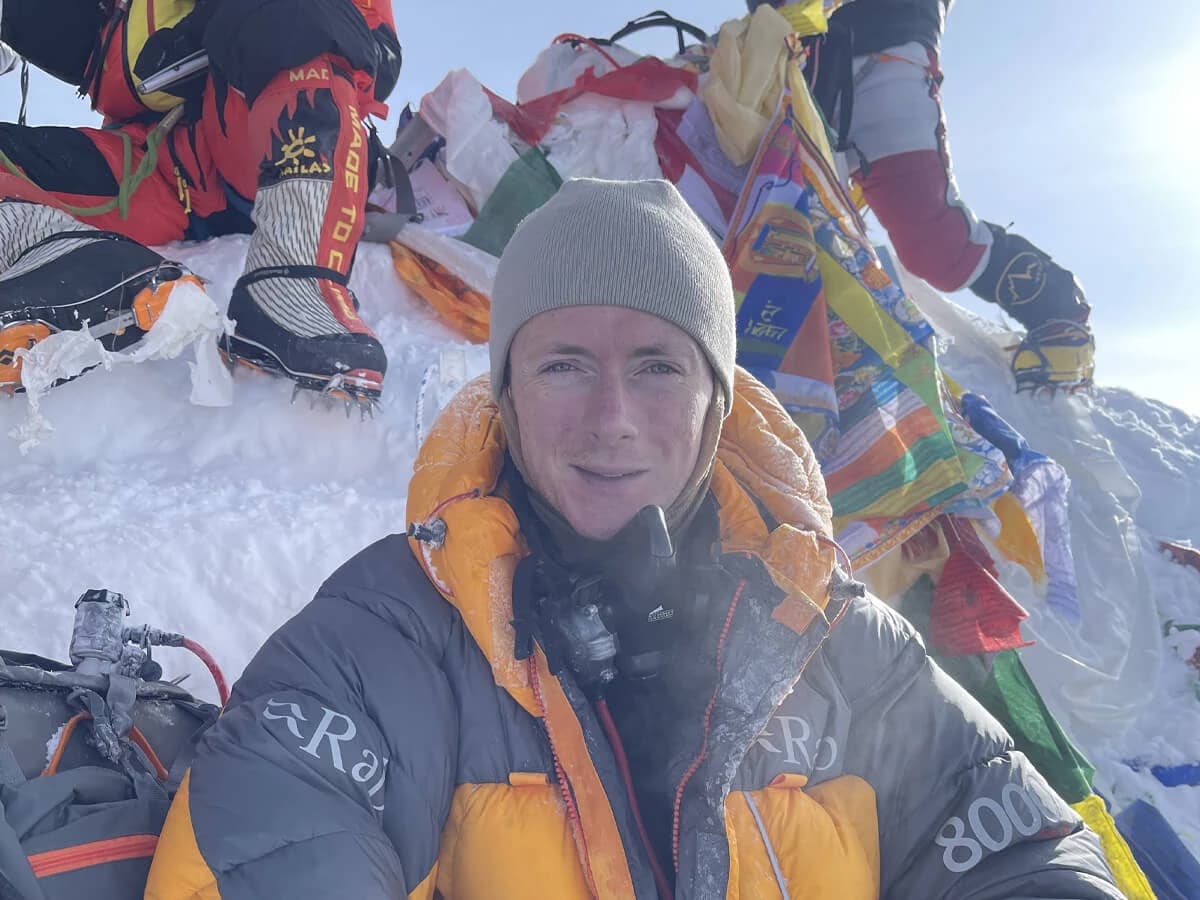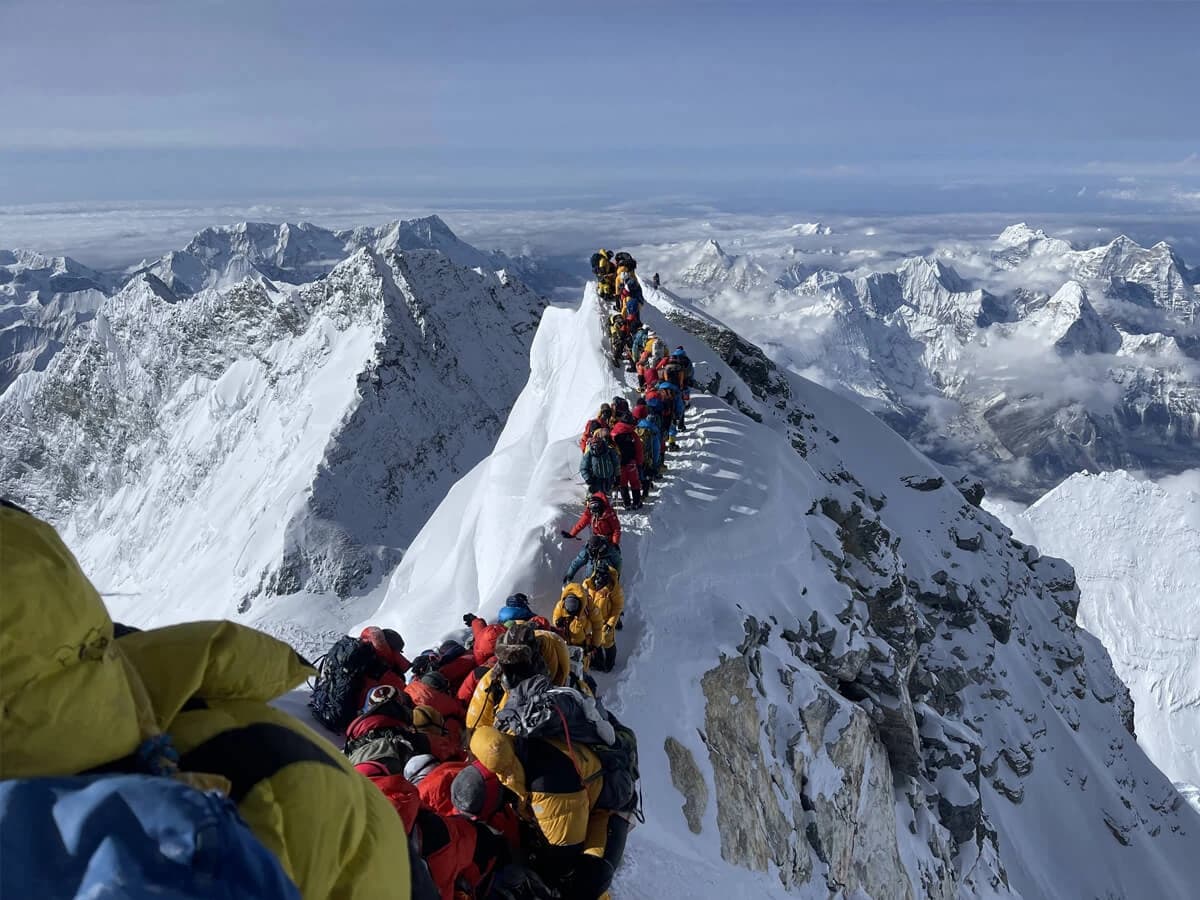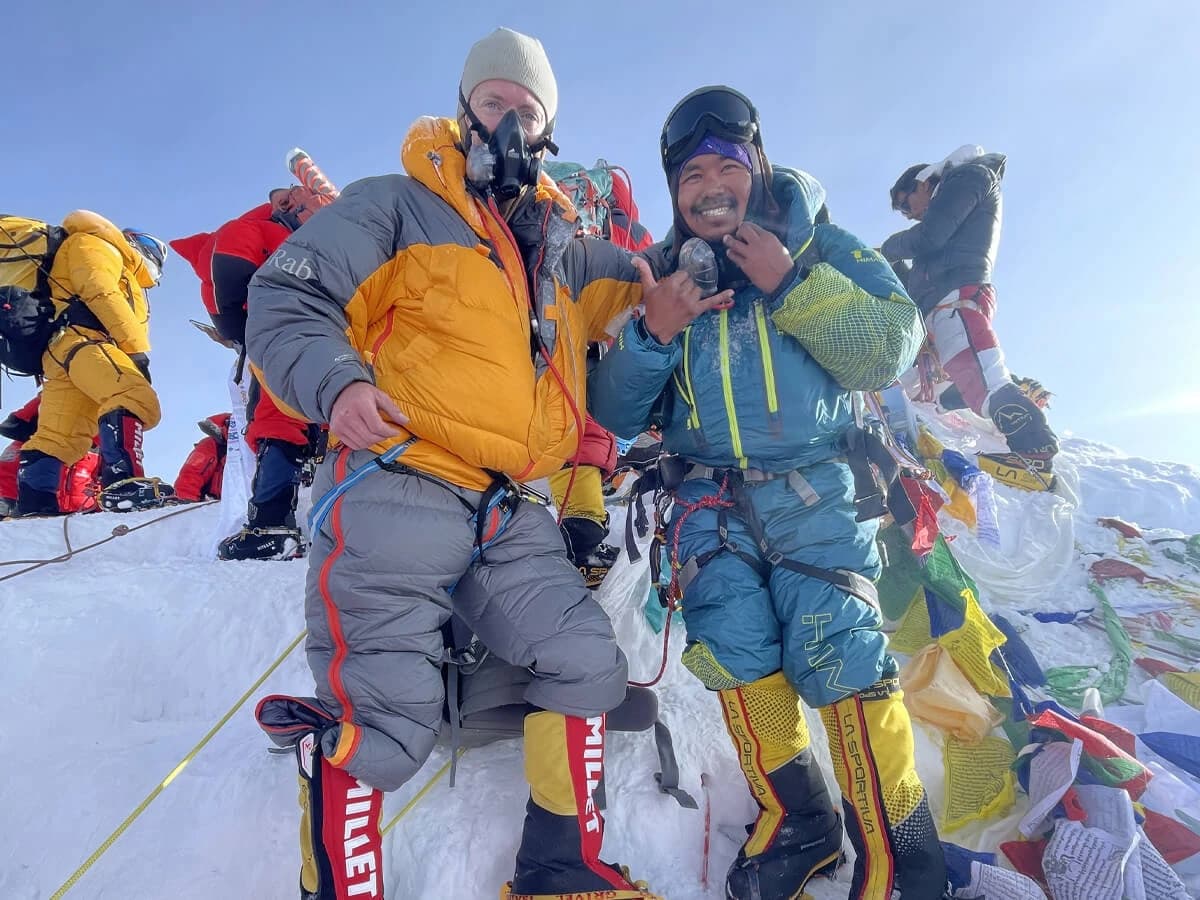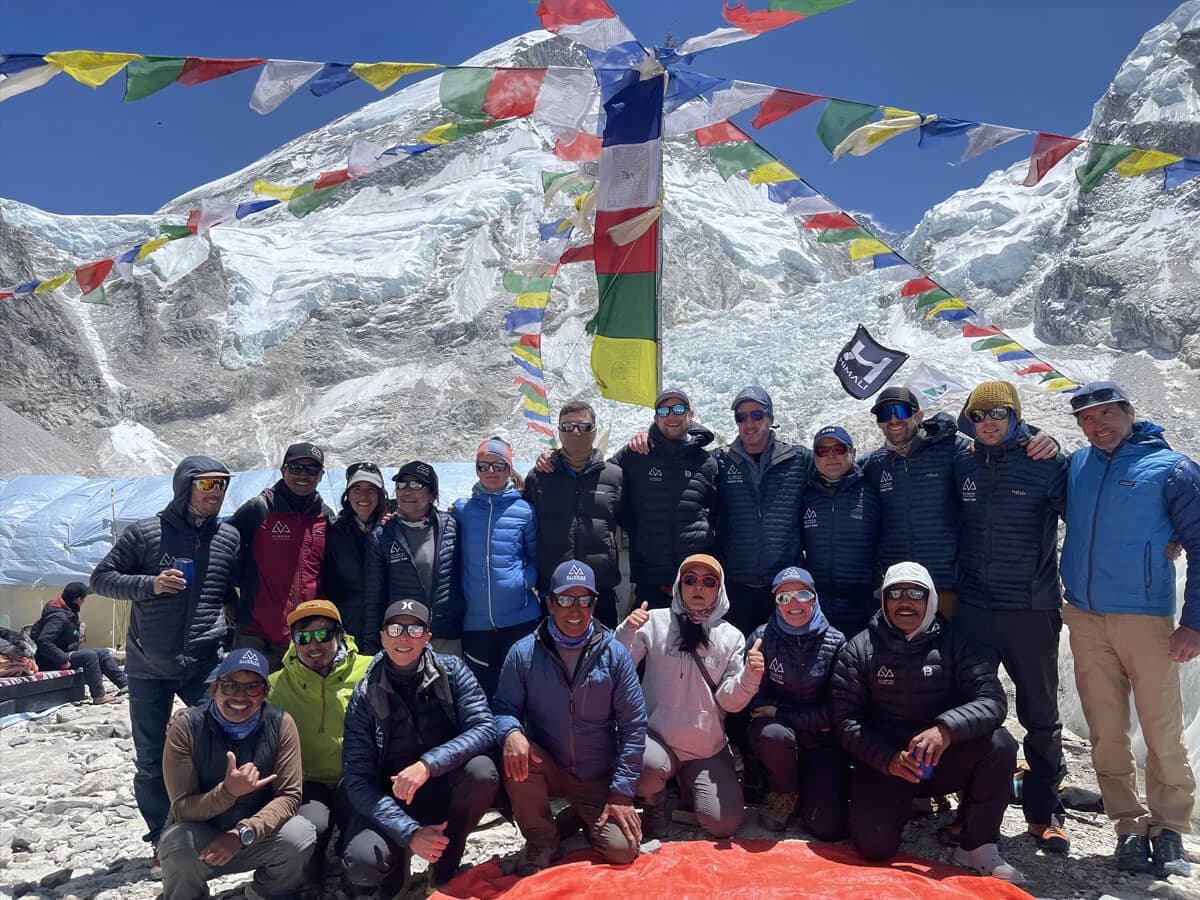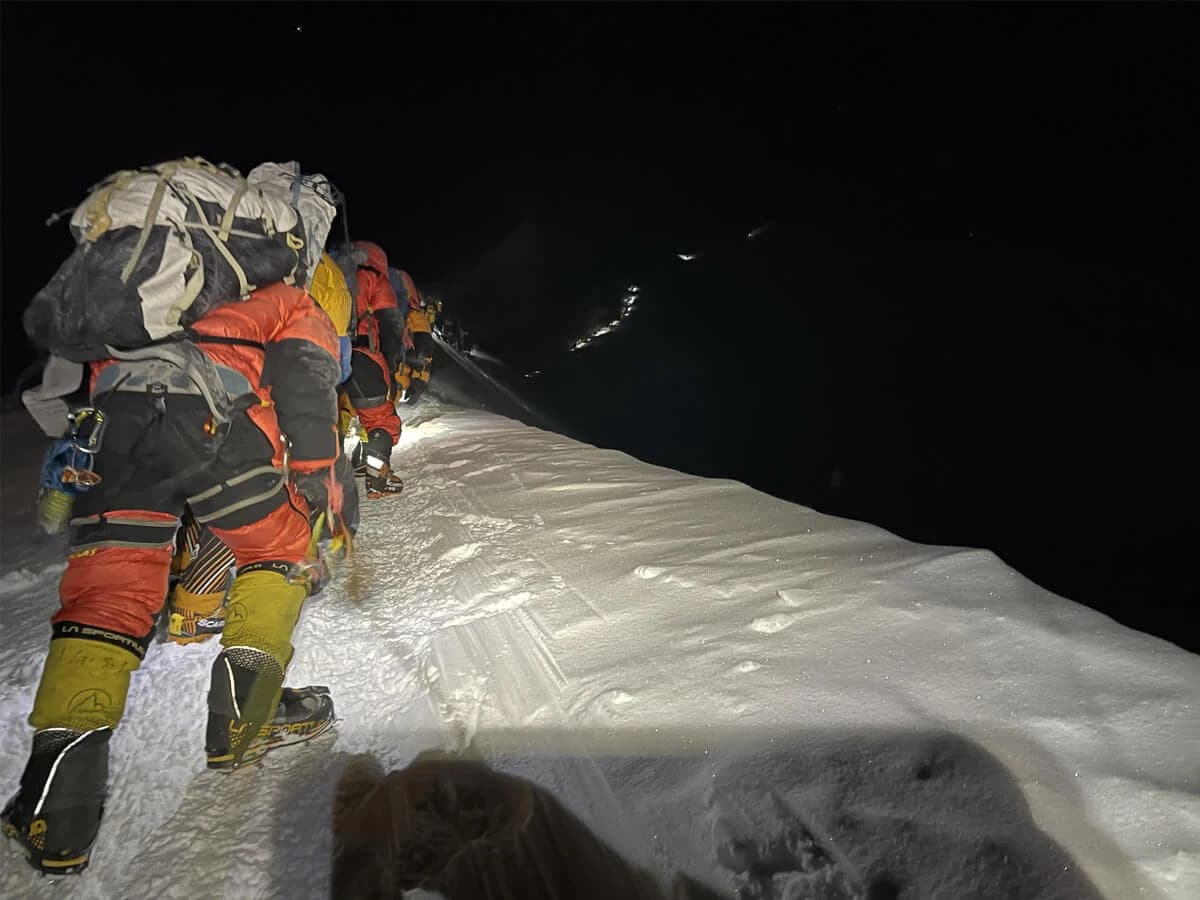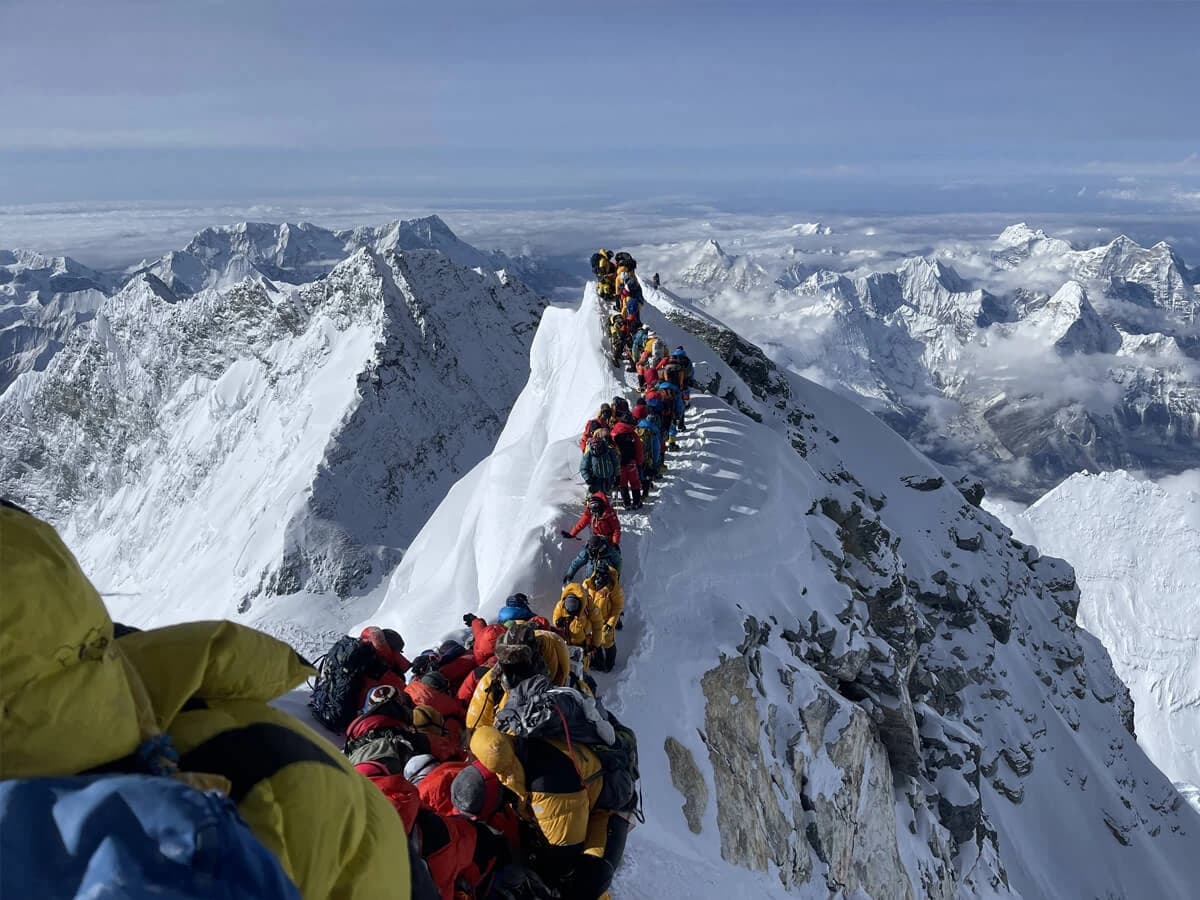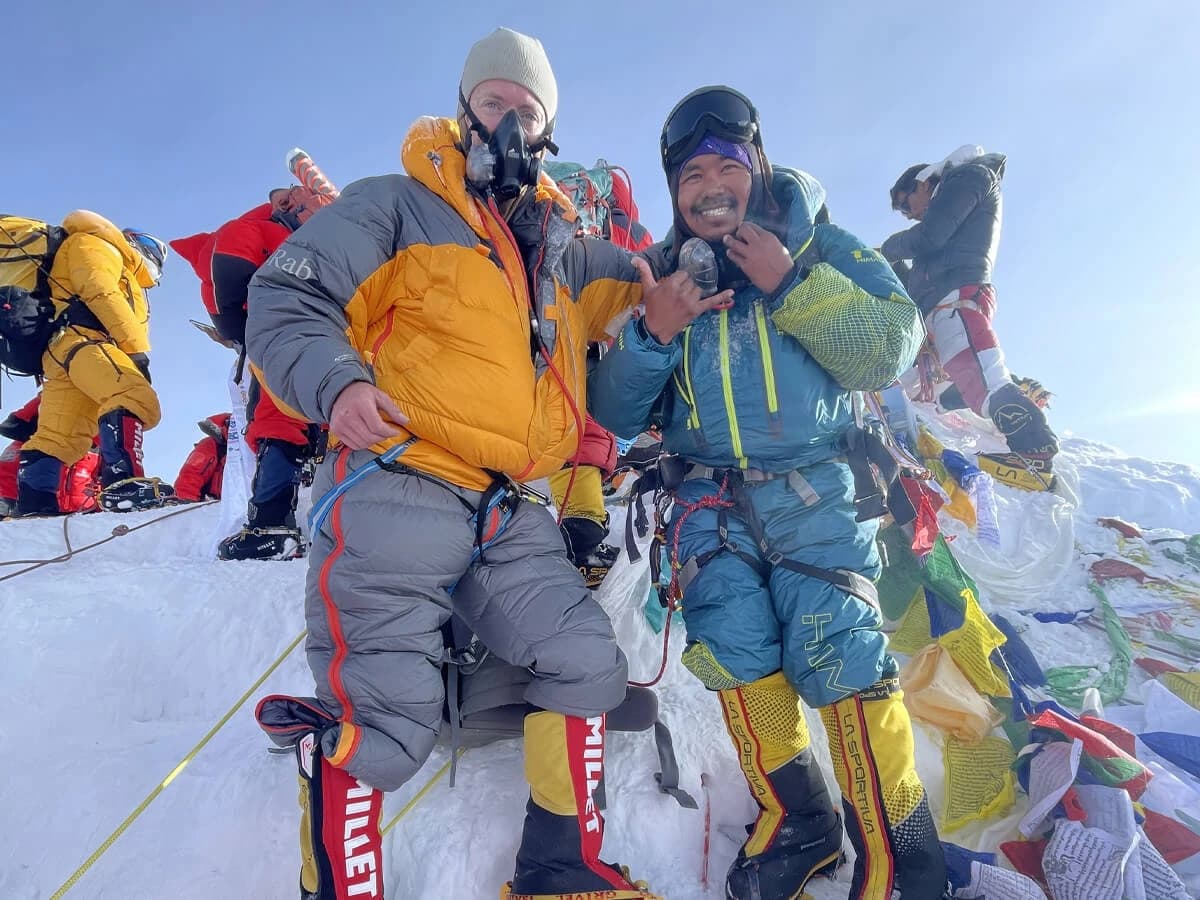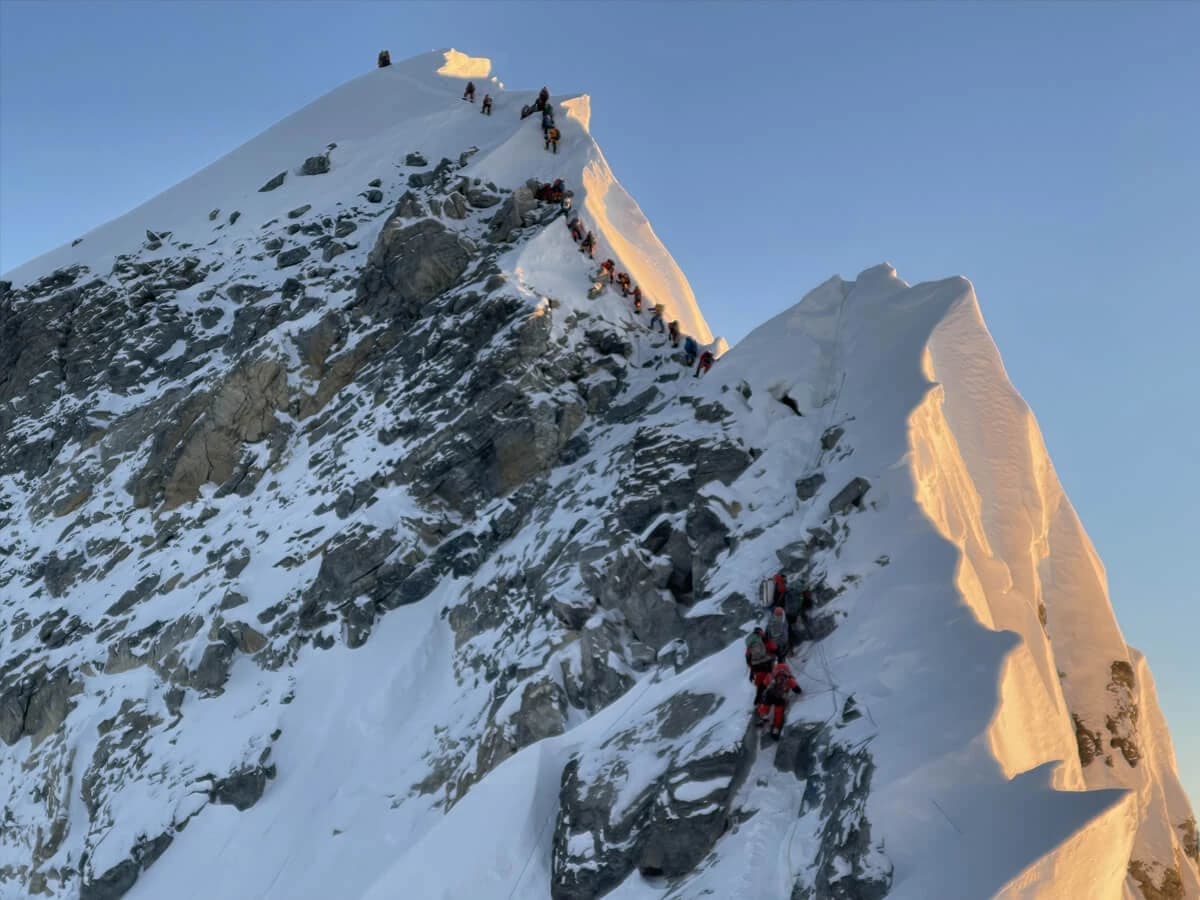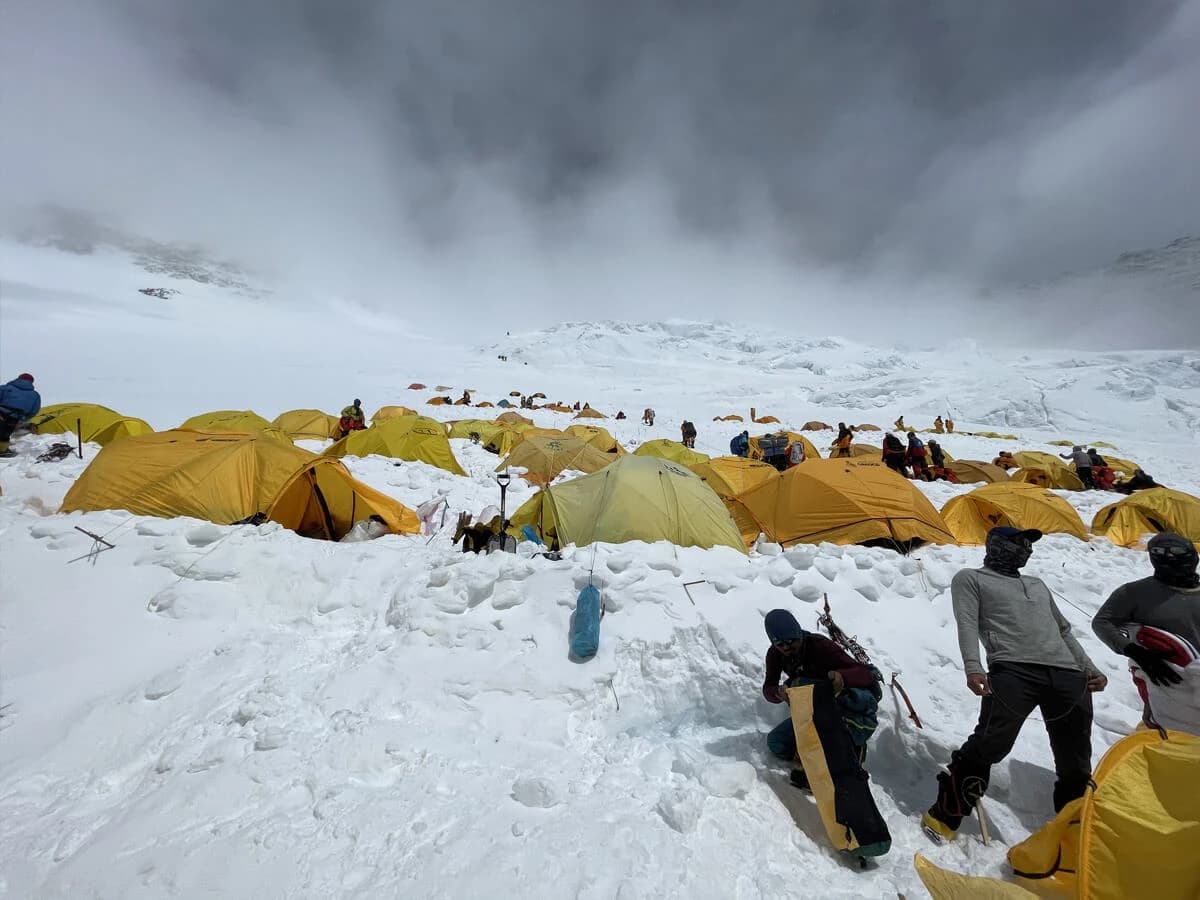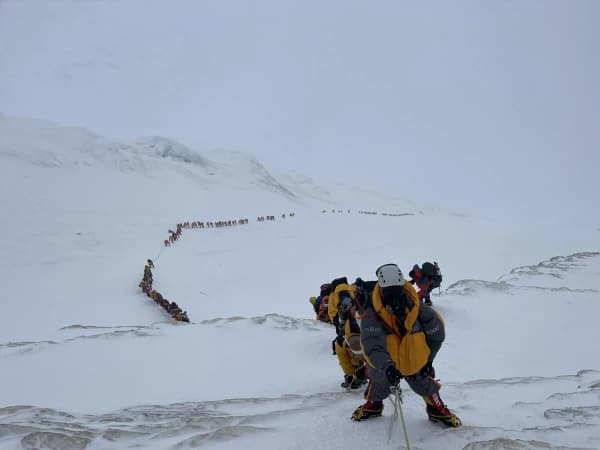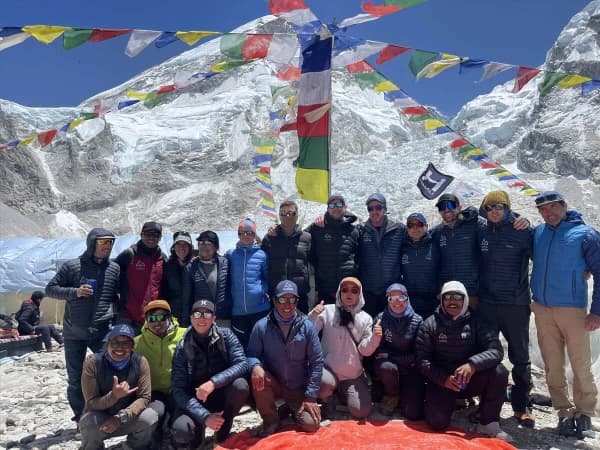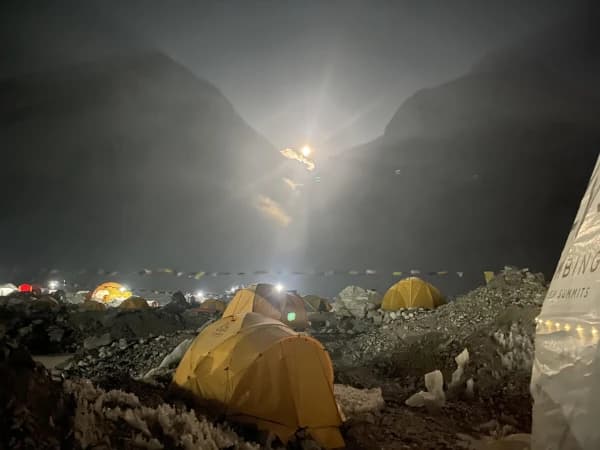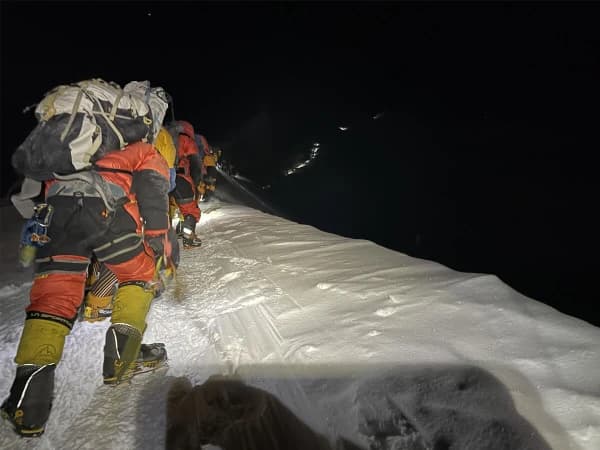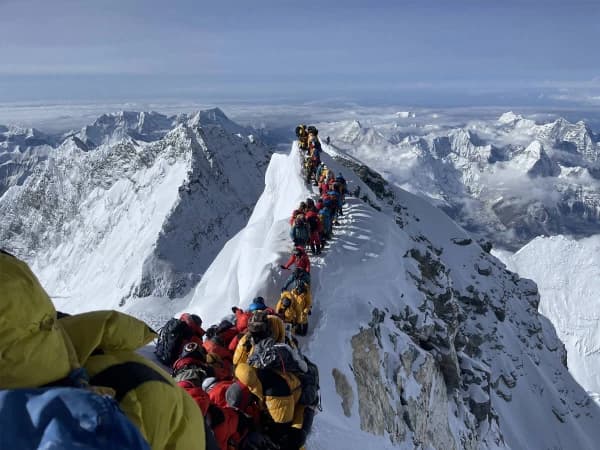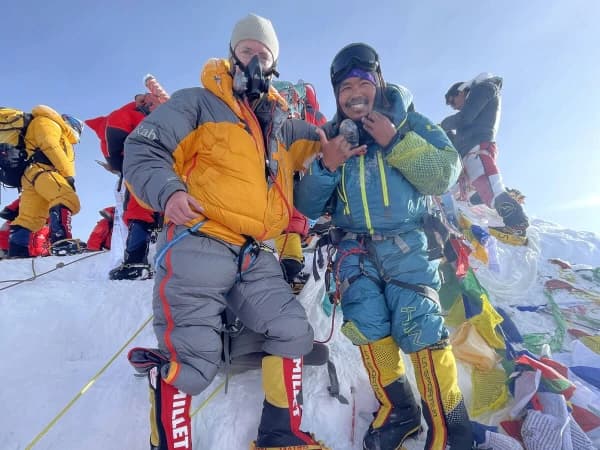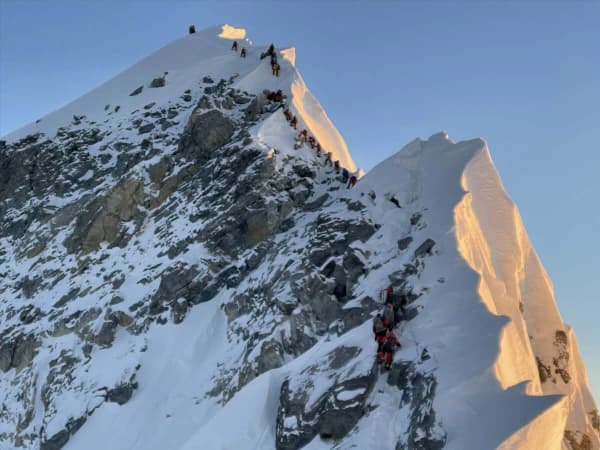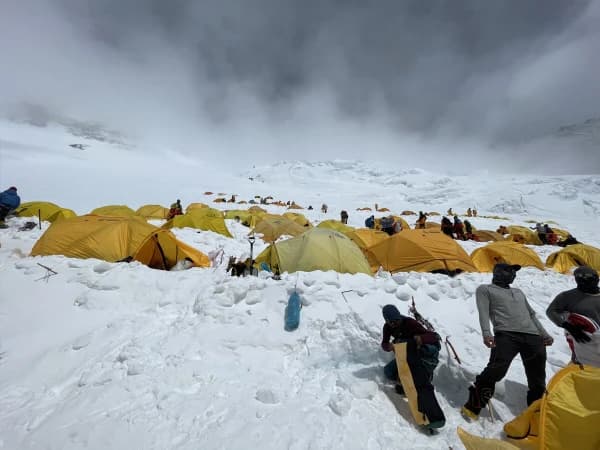Overview
As the world's highest mountain, Mount Everest [8,848.86 m/29,029 ft] is every climber's ultimate goal. Every adventurer aspires to join the illustrious history of Everest climbing, undoubtedly the ultimate mountaineering experience. However, the trek to the top of Everest is not without its difficulties. We have decades of expertise leading teams to the top of Mount Everest, and we have fulfilled the aspirations of many individuals. Additionally its 48 days adventure expedition trip and within these days you are techinically trained by IFMG guide, does hike in different altitude to acclimatize your body. Moreover, before Mount Everest summit you have to climb Lobuche East Peak (6,119m) to adjust you are body with high elevations environment and to conquer you are Mount Everest 8,848.86m Expedition summit successfully.
Highlights
- Get an incredible lifetime experience climbing the world’s highest and tallest Mt. Everest.
- Fully guided Everest Expedition with Sherpa support and max 02.
- 1:1 Sherpa guide to client ratio & UIAGM/IFMGA expedition leader.
- Lobuche East Peak Climb for the acclimatization.
- Pumori Base Camp trek for acclimatization.
- Technical training is conducted by an experienced UIAGM/IFMGA expedition leader for the Mt. Everest expedition.
What do you Experience from the Mount Everest Expedition Trip and brief about the Route?
Mount Everest climbing is the dream of both novice climbers and expert climbers. Our Everest expedition is meticulously planned to prioritize your safety and maximize your chances of summit success. With a focus on experienced guides, comprehensive training, and state-of-the-art equipment, we provide a supportive environment for your journey to the roof of the world. Benefit from increased oxygen support and comfortable logistics at base camp and Camp 2, ensuring you're well-prepared for the challenges ahead.
We follow the standard trekking route to Everest base camp following Lukla, Namche Bazar, Tengboche, Dingboche, Lobuche, Gorekshep, and finally Everest base camp. Once you arrive at base camp, you’ll take some time to acclimatize, organize our gear, and mentally prepare for the challenges that lie ahead.
Before the main ascent, we’ll conduct a pre-climb training session on the lower Khumbu Glacier ice seracs at base camp. This session will focus on equipment checks and a review of essential climbing and rescue techniques. Before that to optimize acclimatization, you will climb Lobuche East Peak and then training will be at Khumbu Icefall approximately 4, 5 days up and down through the Khumbu Icefall reaching at camp 1 overnight stay at camp one, climb up to camp to 2 and back to camp 1 for night stay, climb camp 2 and overnight stay at camp 2, climb camp 3 and back to camp to for night stay, and retrace back to base camp from the Camp 2 then you will trek up to Pumori (Everest daughter) base camp for your acclimatize, retrace back from Everest base camp.
As part of your Everest expedition, you will have the opportunity to climb Lobuche East Peak, a stunning 6,000 meters peak in the Everest region. This challenging climb will not only help you acclimatize to the high altitude but also refine your mountaineering skills, making you better prepared for the summit of Everest. Climbing Lobuche East Peak and trekking Pumori base camp beforehand helps with acclimatization and reduces the number of Khumbu Icefall crossings. After the climbed and trekked Pumori base camp you will return to Everest base camp and organize a traditional Sherpa Puja ceremony to seek blessings for a successful Everest summit.
Our Third acclimatization stage is a critical step in our Everest expedition. You will navigate the treacherous Khumbu Icefall to establish four camps above Base Camp. Camp 1 perched at 5,900 meters (19,500 feet), this camp marks the pinnacle of the Icefall, Camp 2 at 6,400meters (21,000 feet) we will set up our advanced base camp in the serene western Cwm, camp 3 located at 7,300 meters (23,700) this camp will be positioned at the top of the Lhotse Face cirque, and camp 4 your final camp before summit push, camp 4 will be situated at an altitude of 7,900 meters (25,912 feet) in the South Col. By establishing these camps, you will gradually acclimatize to the extreme altitude and prepare for the final summit bid.
Your experienced expedition leader or climber guide will tailor your acclimatization plan to your specific needs and conditions. Generally, after acclimatized by climbed Lobuche East Peak, crossed Khumbu Glacier up to Camp 3 up and down several days, and trekked Pumori base camp. Our further program is to summit push of Mount Everest includes an overnight stay at camp 1, climb camp 2, and 2 night stay including one day rest day, if the weather is good you will move forwards to climb up to camp 3 and overnight stay at camp 3, to ensure a comfortable and efficient ascent, you will utilize supplemental oxygen from camp 3 if you want or if you are not feeling well, each climber will provide 2 bottles of oxygen as a backup this is only for the climber who wanted to climb Mount Everest without supplemental oxygen. Otherwise, each climber provides with 8 oxygen bottles allowing for maximum flow rate and climb up till camp 4 and overnight spend at camp 4. From camp 4 you will follow the iconic Southeast Ridge, reaching the South Summit before tackling the Challenging Hillary Step and finally, the Summit itself.
Why join us for the Everest Expedition in 2025 to 2026?
- You are guided by the expertise and experienced guide & Sherpa team.
- 1:1 Sherpa guide to client ratio.
- Provide expedition manager/sardar.
- Nepalese UIAGM/IFMGA expedition leader for a group of 4 climbers above.
- Ascent of Lobuche East Peak & trek to Pumori (Everest daughter) Base Camp for acclimatization.
- Provide 4 oxygen for clients for backup for those who want to climb without oxygen and 2 for Sherpa otherwise, we provide 8 oxygen for client and 3 supplementary oxygen for your Sherpa total 11 bottles.
- Achieve incredible climbing experience on Mount Everest.
- Provides Mt. Everest climbed certificate from Nepal Mountaineering Association (NMA).
- In case of emergency, there will be rescue and helicopter stand-by anytime.
- Friendly and supportive team members.
- The issued permit for the Lobuche East Peak by the company is the cost included.
- We provide in an average, affordable cost prices for the Mt. Everest expedition.
- We provide one extra Sherpa climber in case of if suffer main climber.
- Our company distribute their own company named cap for you.
- Company offer proper itinerary of Everest expedition.
- Gives enough acclimatization time and technical training that you need to climb Mount Everest.
Tentative Acclimatization Schedules
First Rotation/Acclimatization
- Lobuche East Peak (6,119 meters/20,075 feet)
Second Rotation/Acclimatization
- Technical Training & Rest at Base Camp (5,364 meters/17,598 feet)
- Climb to Camp 1 (5,900 meters/19,500 feet)
- Climb to Camp 2 (6,400 meters/21,000 feet) & Back to Camp 1 (5,900 meters/19,500 feet)
- Climb to Camp 2 (6,400 meters/21,000 feet)
- Climb to Camp 3 (7,300 meters/23,700 feet) and back to Camp 2 (6,400 meters/21,000 feet)
- Retrace back to base camp (5,364 meters/17,598 feet) from Camp 2 (6,400 meters/21,000 feet).
Third Rotation/Acclimatization
- Retrace back to Lobuche Village (4,940 meters/16,210 feet).
- Trek to Pumori Base Camp (5,350 meters/23,494 feet)
- Acclimatization Day at Pumori Base Camp (5,350 meters/23,494 feet)
- Retrace back to Lobuche Village (4,940 meters/16,210 feet).
- Trek to Everest Base Camp (5,364 meters/17,598 feet)
Note: Please note that these acclimatization programs are a general guideline and may need to be adjusted during the expedition based on individual climber needs and responses to altitude.
Summit Push
- Climb to Camp 1 (5,900 meters/19,500 feet)
- Climb to Camp 2 (6,400 meters/21,000 feet)
- Rest Day at Camp 2 (6,400 meters/21,000 feet)
- Climb to Camp 3 (7,300 meters/23,700 feet) with the use of oxygen (for those climbers who want to use oxygen)
- Climb to Camp 4 (South Col) (7,900 meters/25,912 feet) with the use of oxygen (for those climbers who want to use oxygen).
- Summit Push (8,848.86 meters/29,029 feet) and Descent to Camp 4 with the use of oxygen for those climbers who want to use oxygen
- Descent to Camp 2 (6,400 meters/21,000 feet)
- Descent to Base Camp (5,364 meters/17,559 feet)
Are You Ready for the Everest Expedition? How to Prepare for the Journey?
The climb Mt. Everest is Earth’s highest mountain above sea level, located in the Mahalangur Himal subrange of the Himalayas. There are two main climbing routes, one approaching the summit from the southeast in Nepal, known as the “standard route,” and the other from the north in Tibet. While posing substantial technical climbing challenges on the standard route, Everest presents danger due to altitude sickness, weather, and wind, as well as hazards from avalanches and the Khumbu Icefall. As of May 2024, 340 people have died on Everest. Over 200 bodies remain on the mountain and have not been removed due to the dangerous conditions.
So, to ensure you are well-prepared for the Everest expedition journey and keep your body healthy and fit to adjust to the high-altitude environment. If you are a regular climber, trekker, and hiker, it can also encourage you to achieve your dream without causing any harm related to high-altitude sickness. Manage your gear and equipment for your Everest expedition. Purchase good-quality, warm climbing gear and equipment for yourself that can be used for a long time, so invest money only in quality products to protect your body from the cold and harsh weather conditions in the high-elevation atmosphere.
Physical Fitness
Climbing Mount Everest demands exceptional physical fitness because even though it is a non-technical mountain, in some parts you may find technical sections, such as while crossing Khumbu Glacier. Otherwise, Everest is a non-technical but dangerous mountain due to high-altitude sicknesses such as AMS (acute mountain sickness) symptoms, HACE (high-altitude cerebral edema) symptoms, HAPE (high-altitude pulmonary edema), and frostbite. These are the highest sickness risks of the Everest expedition, and you should be physically and mentally well prepared before climbing.
It's important to note that climbing Everest requires more than just physical fitness. Prior high-altitude experience, technical climbing skills, and a strong mental game are equally important. To avoid such a problem, a person has to do different kinds of exercise training, which can help somehow and reduce certain issues related to high-altitude environments. They are as follows:
High Altitude Tolerance: A person should have the capacity to survive at higher elevations like normal people of the areas, so if you do this training, it will help you to not bring issues. For this exercise, you need to do trekking and peak climbing in the trekking season to keep yourbody adjusted to the high-altitude environment. The ability to function in low-oxygen environments is crucial.
Cardiovascular Endurance: Cardiovascular endurance, or aerobic fitness, is how well your heart and lungs can supply the oxygen you need while you exercise at medium to high intensity. If you have good cardiovascular endurance, you can exercise at medium intensity for a long time (and high intensity for a while) before it makes you tired. This is because your body is able to keep getting the oxygen it needs during exercise.
On the other hand, strong cardiovascular endurance allows your body to move your blood efficiently so you can get more oxygen to your cells. This oxygen serves as an energy source to fuel the cells in your tissues and muscles. So engage in activities like running every day, swimming, hiking, dancing, jumping, climbing, and cycling to build stamina for your EverestExpedition.
Strength Training: Particularly in the legs and core for climbing steep slopes and managing equipment. In mountaineering, speed is strength. From core stability to leg power, every aspect counts. Strength training can help you to develop strong bones, manage your weight, enhance your quality of life, manage chronic conditions (reduce back pain, arthritis, obesity, heart disease, and diabetes), and sharpen your thinking skills.
Do strength training exercises for all major muscle groups at least two times a week. Aim to do a single set of each exercise, using a weight or resistance level heavy enough to tire your muscles after about 12 to 15 repetitions. Here are some strength training exercises: squats, lunges, calf raises, step-ups, wall sits, bicycle crunches, walking lunges, hammer curls, overhead presses, and so on for your Everest expedition preparation.
Mental Toughness: It is the personal capacity for both perseverance and a passion for achieving long-term goals, characterized by the ability to overcome challenges and stay motivated in the face of failure, hardship, and plateaus. For your expedition, this is one of the main things that you need to know so you can succeed in your plan. Resilience to handle physical and psychological stress. Cultivate a positive attitude and a strong mental outlook. The trek can be physically demanding, so having a positive mindset will help you overcome challenges.
Muscular Endurance: The ability of your legs to perform thousands of repetitive movements is vital. Muscular endurance is the ability to continue contracting a muscle or group of muscles against resistance, such as weight or body weight, over a period of time. Increasing the performance of these muscles means they can continue to contract and work against these forces. Greater muscular endurance allows a person to complete more repetitions of an exercise, for example, pushups or squats.
From/Technical: Efficient movement over rugged terrain conserves energy and reduces fatigue. This skill is honed only on similar terrain.
Acclimatization: You will spend many hours at high/extreme altitude. Everest Base Camp stands at 5,364 meters, which is one of the highest base camps in the greater ranges. It is relatively comfortable, but this altitude won’t allow your body to recover well between rotations. How your body deals with hypoxia will be crucial, and it will determine your safety and success.
Hypoxic Conditioning: Hypoxic conditioning typically involves using a hypoxic chamber or mask to reduce the oxygen concentration in the air you breathe. This triggers physiological adaptations, such as increased red blood cell production and improved oxygen utilization. The science and practice have consolidated in favor of the use of normobaric hypoxia via a mask and sleeping tent. While the adaptations are not entirely identical to real hypobaric hypoxia, they do allow for short expedition durations, faster and safer logistics, and a stronger ability to resist illnesses and infections that often hinder your performance on Everest. You need to factor in about 8-12 weeks of HC for Everest. And in the final 6-8 weeks, you will be sleeping at such high altitude that your physical training will be compromised. Which means you must start your physical training as soon as possible.
Flexibility: Incorporate stretching exercises into your routine to improve your range of motion and prevent injuries.
The Climbing Gear and Equipment Lists of the Everest Expedition
Climbing Mount Everest is not a small feat; it demands meticulous preparation and top-tier gear. Here’s an inclusive breakdown of the essential gear and equipment you need for a successful expedition:-
Technical climbing Gear
- Crampons- For traction on ice and snow
- Ice Axe- Crucial for self-arrest and climbing steep slopes
- Climbing Harness- For roped travel and glacier safety
- Carabiners and Ascenders- For fixed lines and belaying
- Helmet- Protection form falling ice or rock
Footwear
- Alpine Boots –Insulated and double-layered (e.g. La Sportive Olympus Mons)
- Camp Boots- Lightweight and warm for use in base camp
- Gaiters- To keep snow out of your boots
- Thermal Socks and Liner Socks- Multiple pairs, no cotton
- Summit Socks
Summit Hand Wear
- Liner Gloves- Lightweight and moisture-wicking
- Insulated Gloves- For warmth during climbs
- Expedition Mitts- Extreme cold protection above 8,000m
- Hand Warmers- Disposable or rechargeable
Headwear and Eyewear
- Balaclava and Buffs- For face protection
- Warm Hat and Sun Hat- For varying conditions
- Glacier Glasses- UV protection at high altitudes
- Goggles- For whiteout or windy conditions
- Helmet- For technical sections
Clothing Layers
- Base Layers- Moisture-wicking tops and bottoms
- Mid Layers- Waterproof and wind proof jacket and pants
- Down Suit or Jacket and Pants- Essential above Camp 2
- Insulated Pants- For warmth during summit push
Personal Equipment
- Backpack (60–80L) – For carrying gear between camps
- Daypack (20–30L) – For acclimatization hikes
- Sleeping Bag – Rated to -30°C or lower
- Sleeping Pad – Insulated for cold ground
- Headlamp – With extra batteries
- Trekking Poles – Adjustable and lightweight
Other Essential Things
- First Aid Kit – Personal medications and altitude sickness meds
- Sunscreen & Lip Balm – High SPF
- Water Bottles & Insulated Containers – Hydration is key
- Water Purification – Tablets or filters
- Snacks & Energy Gels – High-calorie and easy to eat
- Multi-tool or Knife
- Compass or GP
Get the Best Everest Expedition Service with Sherpa Summits
We, Sherpa Summits, specialize in crafting unforgettable mountaineering experiences for both domestic and international adventures in Nepal. Our dedicated team is committed to providing exceptional support and safety throughout your mountaineering climbing journey. We provide 1 Sherpa mountaineering guide for 1 client for the client's safety and security. From acquiring essential permits and arranging transportation to handling every logistical detail, we ensure a seamless experience tailored to your preferences.
Enjoy the epitome of quality service at an affordable price with our Everest Expedition 2025 Package. However, we only conduct Everest expeditions with limited people because it is easy to cooperate with each other, providing quality services about logistics, training, and everythingduring their expedition time. Whether you’re embarking on a solo adventure or exploring and climbing the mountains with friends or a partner, your safety and satisfaction are our top priorities. Our expert UIAGM/IFMGA guides, assistant guides, and trustworthy Sherpa staff are so supportive and caring so you can achieve your Everest expedition successfully. Customize your Everest expedition to align perfectly with your desires. Select your preferred departure date, group size, and daily itinerary. We welcome all of you as long as you possess the necessary physical and mental fitness. Rest assured, there are no hidden costs involved, and you will receive transparent pricing for your Everest expedition.
Embark on the adventure of a lifetime with Sherpa Summits. Our Everest expedition bookings for 2025 and 2026 are now open. Don’t hesitate to contact us for any inquiries or to start planning your dream Everest expedition.
